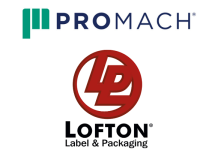The packaging is more significant than it would seem at first glance. In addition to attracting the attention of customers, it must provide information about the contents, that it must enable correct delivery, and that it must preserve the things that are contained inside. This kind of protection has far-reaching ramifications when it comes to dealing with delicate things such as electrical devices, food, or medical supplies.
Preservation of the Loyalty of Customers
The most evident of these repercussions is that a damaged reputation is the result of failing to secure things while they are in transit. Should they get a defective order, as much as 58% of customers in today’s market will not make another buy from that particular company.
In spite of the fact that a firm may provide free returns or complete reimbursements, it is difficult to circumvent the effects of poor packing. Shipping damage conveys, although unconsciously, the message that the company is solely concerned with the financial well-being of the client and not the quality of the customer’s experience. These sentiments are also present in the business-to-business (B2B) sector. Because it demonstrates that they value the other’s customer, retailers are more inclined to form partnerships with third-party logistics providers (third-party logistics providers) who have a reputation for providing care.
Adhering to the Regulations and Standards
Inappropriate packaging may have even more serious repercussions for some businesses, despite the fact that no company wants to alienate clients who value their loyalty. Food and medical supplies, which are subject to stringent regulations, represent a threat to public health and safety in the event that they get damaged or go bad while they are in transit. And as a consequence, instances of this kind may result in regulatory fines.
In accordance with the regulations of the Food and Drug Administration, the transportation methods for food must not in any way cause the food to be disrupted. Protective packaging is also a component of the process, despite the fact that a considerable number of these are associated with transportation, such as the use of refrigerated trailers. For instance, if containers are unable to withstand oxidation or humidity, this might lead to things having an earlier expiry date than they would otherwise have planned.
Additionally, the packaging of electrical devices must be designed to minimize battery-related risks such as shocks and fires. Anti-static bags and appropriate insulation for lithium-ion batteries are examples of those that come within this category of criteria.
Maintaining a Low Cost
Regulatory and consumer concerns often have a subsequent consequence, which is financial losses. This is a common secondary consequence that emerges from these issues. In many cases, persons who do not comply are subject to financial penalties. There is a correlation between declines in customer loyalty and declines in sales. Not only are these monetary ramifications possible, but they are not the only ones that might emerge from poor packing decisions.
Other than customer turnover, returns will cost merchants in the United States $743 billion in 2023. Even in the event that a corporation is able to sell the same goods once more, they will have spent money on at least two shipments: one to deliver the product to the buyer, and another to return it to the seller. Most of the time, a product that has been damaged must be discarded, which means that it is not just a waste of resources but also of the energy that is associated with manufacture.
Particularly Important Considerations for Sensitive Items
From a monetary point of view, it is advisable to spend money on superior packaging from the very beginning of the process, taking into consideration the expenses which are involved. Goods that are extremely fragile often reap the benefits of having their packaging adapted to meet the criteria that are unique to them. It is possible for things that are produced in order to be accessible in as little as two to three days. This provides a higher level of security without having a substantial impact on the length of time it takes to supply such items.
The meaning of “protection” will change depending on the product, thus businesses need to take into consideration the factors that pose the greatest risks to each individual item. Insulating against physical shocks is essential for anything that is delicate; yet, airtight packaging that prevents humidity and thermal insulation are more critical for food than other types of transportation. When it comes to electronics, anti-static bags and a separate container for lithium-ion batteries are both necessities.
While companies are addressing these problems, they should also implement any regulations or shipping guidelines that have been provided by their third-party logistics provider (3PL). In many instances, certain labels are necessary for the shipment of items that are subject to stringent regulations. Take into consideration that such criteria may differ from one place and service to another. As an instance, the International Air Travel Association mandates that lithium batteries must have a maximum charge of thirty percent in order to be transported, although other organizations do not adhere to the same regulations.
As a result of the fact that sensitive items often demand a significant amount of material, businesses have to think about environmentally friendly alternatives to the standard packaging insulation. Corrugated cardboard that has been recycled, bioplastics, cornstarch, and cellulose are some examples of these.
It Is Essential for Companies to Employ Appropriate Packaging for Their Products
Whatever it is that a firm offers, it is obligated to safeguard. Specifically, this entails selecting the most suitable packaging for the items in question. It would be a costly error to ignore concerns of this kind. The best course of action is to avoid damage in the first place since it may lead to the loss of consumers, problems with regulatory agencies, and increased costs. The investment of both time and money required to guarantee that protective packaging is in place will, in the long term, be worthwhile.




























